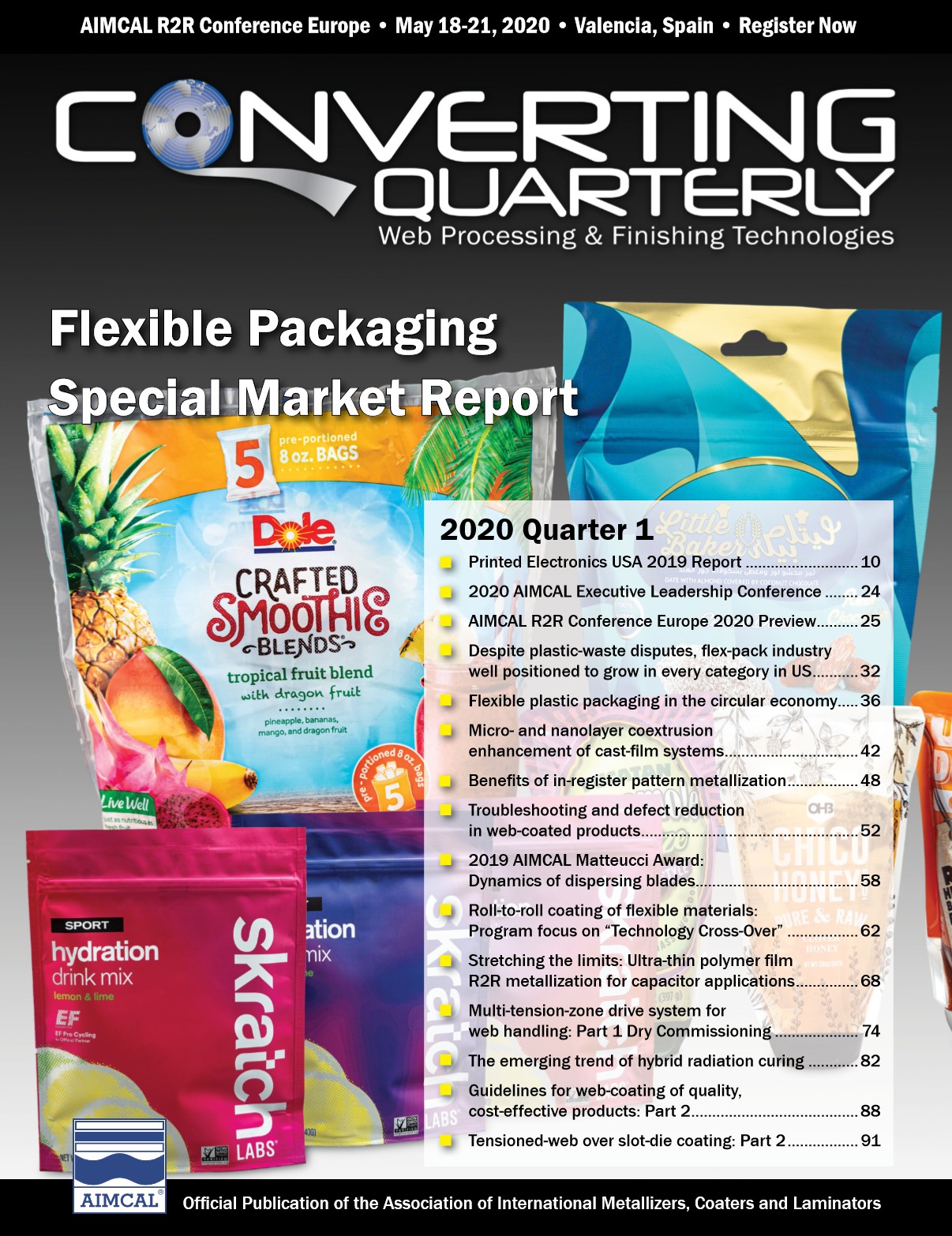As published in Converting Quarterly, in Quarter 1, 2020 by Ted Lightfoot.
Abstract
Troubleshooting means different things to different people at different times. Managing well-understood defects in an established product is different from dealing with poorly understood defects that arise unexpectedly or with a new product. This article discusses three strategies for
troubleshooting product issues and which strategies are most appropriate in what context.
Introduction
There are many kinds of trouble, and many useful ways to classify defects. But, there are two basic scenarios for troubleshooting a product: You may be faced with known defects, and you may be faced with defects you have never seen before. The optimal strategy for troubleshooting is different for the two cases.
Known defects
Every product and every process has its signature defects. Extruding a pigmented resin is likely to produce plate-out – which may never be seen if the same resin is extruded without pigmentation. Die coaters – whether extrusion coating or solution coating – are more prone to particle streaks than gravure coaters. Most operations track yield loss to common defects in a Pareto chart.
One goal of the R&D phase is developing operating conditions that avoid as many defects as possible. However, most sold out processes operate at an intersection of multiple constraints: Any subtle variation is likely to produce defects (or variation in product properties). Thus, a second goal of R&D is to provide the operations staff with a troubleshooting guide for defects endemic to the product. This guide should specify a sequence of corrective actions, starting with actions operators can take on their own initiative and progressing to actions that require supervisory authorization. F or example, on observing particle streaks, an operator may clean the die face. If that does not work, the coating head is retracted to clear the slot. If that does not work, the filter, raw materials or die may be changed – but these require supervisory approval.
Operators responding to a known defect may not think of themselves as “troubleshooting,” as in troubleshooting is engineers talking, and corrective action is operators fixing things. But, this is a false distinction. All successful troubleshooting ends with a corrective action: What varies is how much analysis and how many unsuccessful actions are necessary before the problem is resolved. It is helpful to position simple corrective actions as part of troubleshooting so all attempts at corrective action are documented and the cost of each episode is documented.
All commercial products ran “defect-free” at some point. For you to be troubleshooting, something must have changed. With well-developed products and well-maintained processes, the majority of troubleshooting should be associated with changes in raw materials. Therefore, the primary need for troubleshooting in standard production is the ability to track what changed, when it changed and how that correlates to the incidence of defects.
The greatest advance in coating quality over the past four decades is the proliferation of on-line defect detection. These systems (either laser-scanner or camera-based) provide virtually 100% inspection of the coated product and have rendered the concept of “defect-free” film obsolete: Every roll of film has a finite level of numerous defects (i.e., the number of gels or white specks per thousand sq meters). The definition of when defects occur becomes statistical in nature: When does the defect count become unusual? Fortunately, on-line detection gives more rapid and objective notice of shifts in the defect count than visual observation.
However, there are three limitations to on-line inspection. First, it is easier to map localized discrete defects than it is large defects (i.e., streaks or patterns that cover the web). Second, inspection systems must be trained to recognize and distinguish different defects (i.e., you must set mathematical criteria to distinguish a gel from a white speck). That makes on-line inspection far more useful for known defects than unknown defects. Finally, the statistics of defect counting are fundamentally different from the statistics encountered with property variations (following a Poisson rather than a Normal distribution). This can lead to incorrect conclusions from statistical tests (most commonly false positive indications).
Unknown defects
Anyone who has spent time around a coating line has had a chance to react to a sudden onset of a defect no one (local) has seen before. These are expected in the R&D phase but also occur unexpectedly in routine production. R&D should be responsible for documenting any new defects that occur in scale-up, as well as major excursions seen in production. The strategy for managing the unknown is quite different from managing the known.

While it is helpful to classify known defects by a common name, assigning a descriptive name to an unknown defect often hinders troubleshooting more than it helps. The natural response to a new defect is to find out if others have faced this defect, and the obvious way to do that is to look at published troubleshooting guides [1-2]. While some progress has been made in standardizing terminology, it still is common to see people chasing the wrong defect because they use different terminology than the troubleshooting guides. In the worst cases, people chose a name from a troubleshooting guide for the root cause or specified corrective action they want (thus exonerating the operation by implicating the raw-material vendor).
The safest way to approach an unknown defect is to begin by classifying the defect functionally (see Table 1).
Often localizing where and when the defect occurs can provide enough information to solve the problem. For example, a contaminant that suddenly appeared at the interface between the coating and the base after a roll change almost certainly is caused by dirty base and usually will be solved by cleaning the base or changing to a lot of clean base. Performing the analysis necessary to classify the defect per Table 1 becomes the primary procedure that can resolve most defects. However, it is not uncommon to encounter defects that require extensive technical work to mitigate. These are best addressed in a longer-term, defect reduction program.
Defect-reduction programs
Defect-reduction programs are expected in scale-up of new products, but they also are initiated by the business in response to the needs documented in a Pareto analysis. The key to significant reduction in defects is to address the mechanism of the defect. There often are multiple levels of understanding, and, at each level, new control actions may become apparent. The most efficient way to determine the mechanism is to adopt a systematic procedure of listing possible mechanisms (guided by the classification scheme in Table 1) and testing to see which is at play. Usually this involves measuring the effect of process variables on defect generation. Experimentation on a production machine can be expensive, particularly statistically designed experiments. The reason to base the experimentation on hypothesis testing is to segment and reduce the number of factors being considered in each experiment.
This is best illustrated by example. Microscopic thin spots or holes in a wet coated layer could be bubbles in the coating or blisters made in drying. The fi rst test should be to determine if the bubbles are present in the coating or are generated in drying. If the answer is drying, then the quickest mitigation plan is to slow down the line until the defect disappears. This might be a good screening test, but it is an undesirable solution. Blisters are most likely to occur in the transition from constant-rate to falling-rate drying. The higher the concentration gradients in the coating, the earlier that transition is likely to take place and the more the formation of blisters can be spread into later zones.
One strategy for mitigating blisters is to map the effects of temperature in different drying zones at different line speeds. This may provide enough insight to enable preparation of a troubleshooting guide, but it does not provide the guidance of a validated drying model. If a simple thermodynamic model (ignoring diffusion) can accurately predict where the transition from constant rate to falling rate occurs, that will provide more precise guidance over a wider range of line speeds than plant tests, and it may predict blisters well enough for practical purposes. But, if diffusion is a significant factor (it usually is with blisters), thermodynamic models will not be reliable. Models that account for diffusion can be expensive and require external resources. However, it is not uncommon to see a robust drying model give precise enough predictions to enable a 50 to 100% increase in productivity without causing craters. The goal is to get the understanding you need to reliably control the process – no more, but no less.
Conclusions
The key to effective troubleshooting is being clear about what you know and what you do not know. If you know how to detect and manage a defect, the best strategy is to follow a (validated) troubleshooting guide. However, when faced with uncertainty, the best strategy is to document what you know and what you are assuming as you test those assumptions. Once you reach an effective control action for the defect, that action – along with any residual uncertainty – should be documented in the troubleshooting guide.
References
1. E.B. Gutoff and E.D. Cohen, Coating and Drying Defects: Troubleshooting Operating Problems, 2nd Edition, New York: John Wiley and Sons (2006)
2. E.J. Lightfoot, “Extrusion Coating and Lamination Defects,” Ultimate Web and Roll Troubleshooting Guide, R. Duane Smith, Ed., Atlanta: TAPPI Press 2013
E.J. (Ted) Lightfoot, Ph.D., is the principal consultant at Ted Lightfoot LLC. He worked for DuPont for over 35 years in the photographic business, casting, coating and laminating fluoropolymer and optical films (as well as some emerging technologies that remain proprietary). His experience in R&D, plant support, as a Six Sigma Black Belt for Growth and application development (helping customers develop processes and structured products) gives him a balanced perspective on what it takes to build a robust supply chain. Lightfoot is a consultant, writer, speaker and teacher of short courses. He can be reached at 716-449-4455, ejl@TedLightfoot.com, www.TedLightfoot.com.
Original article can be found online here.


